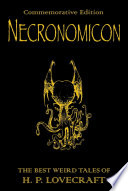It's difficult to test CSS. In Nokia Maps, we use lots of different kinds of automated tests to ensure the build is doing what it's supposed to do – Jasmine for JS unit tests, jBehave for Java acceptance tests, a whole load of integration tests and systems to make sure all along the process that we know as soon a something goes wrong.
CSS has typically been left out of this process – not just in our team but generally throughout the industry – because it's a difficult thing to test. CSS is a declarative language meaning that the CSS of a page doesn't describe how the page is to accomplish the task of turning text red, for example, it simply says 'the text should be red' and the implementation details are left up to the browser. This doesn't fit well into typical testing strategies as there is no sensible way to pass information in to check the outputs are as expected. With a declarative language, there is very little logic around which you can wrap a test. In essence, the bit you would normally test is the bit handled by the browser. About the closest CSS gets to having continuous-deployment style tests is to run your files against the in-house style guide using CSSLint.
That's not to say people haven't tried testing CSS. There are lots of opinions on how or why it should be done but with no concrete answers. There has also been a lot of thinking and quite a lot of work done in the past to try and solve this requirement. This article from 2008 and this article from 2006 both propose a potential route to investigate for testing strategies.
In summary, the two main approaches used are:
- Generate images from the rendered HTML and compare differences (c.f. css-test by Gareth Rushgrove)
- Specify expected values and compare actual values (cssUnit, CSSUnit)
There must be something about the desire to test CSS and the name Simon as both Simon Perdrisat and Simon Kenyon Shepard created (separate) unit-testing frameworks called 'CSSUnit'. And there's me, obviously.
Another important related note: there's no point in developing a CSS testing framework for Test-Driven Development. Again, this is an aspect of being a declarative language but, by the time you've written your test, you've written your code. There's no Red-Green pattern here. It either does what you intended it to or it doesn't.
In essence, the only way to test CSS is by verification testing – the kind of thing you do before and after refactoring your styles. This, essentially, involves working within your normal process until the job is done then creating 'snapshots' of the DOM and capturing the current cascaded styles. You can then refactor, rework and reorganise your CSS as much as you like and, as long as the combination of snapshot DOM plus CSS produces the same results as before, you can be confident that your entire system still appears the same way.
Get to the point...
Why the long ramble about CSS testing strategies? Well, unsurprisingly, I've had a go at it myself. My approach falls into the second category mentioned above – measure styles once finished and create secure test-beds of DOM structure which can have CSS applied to them. The test system is currently being run through its paces in Nokia Maps City Pages (my bit of maps) and, if it passes muster, I'll put it out into the big, wide world.


